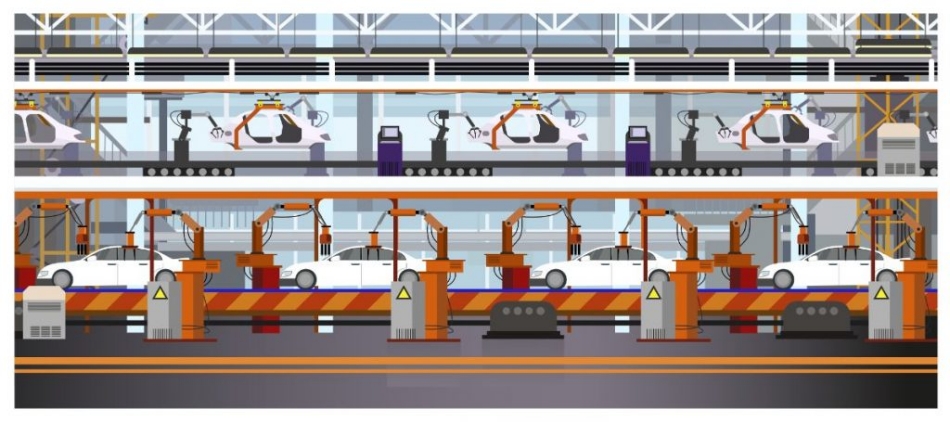CaCO3 in calcium carbonate filler is proven to have impacts on PP resin’s properties
Calcium carbonate filler contains CaCO3 powder a common mineral accounting for approximately 5% of the earth’s crust. CaCO3 powder to make calcium carbonate filler is known as a versatile component functioning as a cost-saving solution in various fields including paper, construction, paints and coatings, adhesives and sealants, rubbers and plastics, etc. However, it is recently proved to display the enhancing effects on the mechanical properties of polypropylene (PP) polymers – a major material in the modern plastic industry. Among the most-used thermoplastics in the world, polypropylene (PP) shows the highest demand.
I. Global demand for calcium carbonate filler and PP plastics
The global CaCO3 powder market size has been raising non-stop in the past few decades and is forecasted to reach up to nearly 38 billion USD by 2025 (according to reports of Grand View Research, Inc.). The plastic industry requires a huge demand for both types: precipitated calcium carbonate (PCC) and ground calcium carbonate (GCC). In the plastic industry, PCC is more favored than the GCC in utilizing it as the filler. They can function as opacifier extenders, impact modifiers, glossing agents, cavitation agents, or a cost-effective whiteness solution.
Categorized into regional markets, Asian countries, especially China, India, and Japan, are the major consumers of this type of CaCO3 powder – the main material to produce calcium carbonate filler. The increasing demand of using calcium carbonate is due to the expansion in end-use industries, especially in construction and automotive production with the involvement of a wide range of plastic accessories.

Limestone – the inexpensive source of calcium carbonate filler
Limestone is well-known around the world as a sedimentary rock that is mainly composed of calcium carbonate (CaCO3). They exist in nature in three polymorphs: calcite (the most thermodynamically stable form), aragonite, and vaterite. These rocks may also contain magnesium in is components and are called dolomite (calcium-magnesium carbonate, CaMg[CO3]2). Here in EuP, we are proud of being able to exploit the abundant and high-quality source of calcium carbonate in limestone quarries in Vietnam.
II. Why calcium carbonate filler is commonly used in the plastic industry?
Nowadays, both the plastic and automobile industry cannot survive without calcium carbonate filler. But what makes them so special? First, they have abundant reverse in natural resources, that’s why they are affordable both in price and the available amount. Obviously, no producer will say no to cheap material. Adding calcium carbonate into the plastic mixture can be considered a smart way to replace a part of the input material without affecting the quality of the product. Hence, manufacturers can save a lot of money by spending material costs up to 40% and generally increase their profit.
Not only is beneficial to the producers, but calcium carbonate filler also plays a vital role in protecting consumers from unpredictable price fluctuations, consequently creating a price-stable market where consumers can have a wide range of choices in choosing the manufacturer that fits them best.
Various key properties are improved by using calcium carbonate filler
CaCO3 filler showed up to be the best choice to enhance various mechanical properties of plastic, especially the PP resins. The addition of calcium carbonate filler in polypropylene has been shown to lift the performance of finished plastic products, especially in several key properties such as impact strength, stiffness, heat deflection temperature, thermal conductivity, printing ability, sustainability, etc. Depending on which type of limestone is used, the mixture will display a distinct combination of properties. For example, polymers added with aragonite show enhanced impact resistance, tensile strength, decomposition, and glass-modifying temperature.
Enhanced loading efficiencies brought by calcium carbonate filler
The use of calcium carbonate filler also brought
competitive advantage to the consumers, especially who use the PP masterbatch
in thermoforming applications. The enhanced thermal conductivity allows plastic
to heat up and cool down much faster, and by that the amount of energy needed
for processing is significantly cut down. As the result, manufacturers are
benefited from the reduced production costs, improved productivity, higher
quality outputs, faster and higher conversion rates, all leading to the
improved operating efficiencies and finally the huge advantages in the bottom
line.
Calcium carbonate filler – a safe material for both human and environment
Finally, there is another advantage of calcium carbonate filler that not much people know about: the safety it brought to consumer’s health and environment. Calcium carbonate is 100% proved by FDA to be safe for using in critical applications such food and beverage packaging and medical packaging. The utility of calcium carbonate as a plastic extender can also cause positive impact to the environment by cut down the use of primary plastic, resulting in decreased in crude oil exploration – an important natural resources that are gradually exhausted. Moreover, according to researches published by Heritage Plastics, approximately 23% of Green House Gas can be saved by using a 40% loaded calcium carbonate filler for polypropylene plastic products.